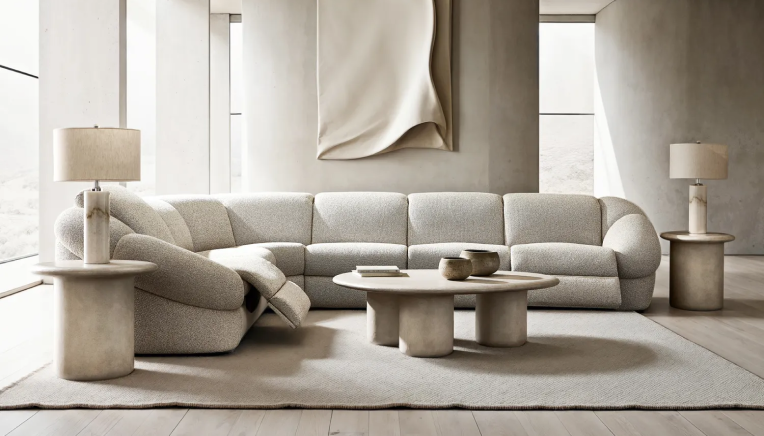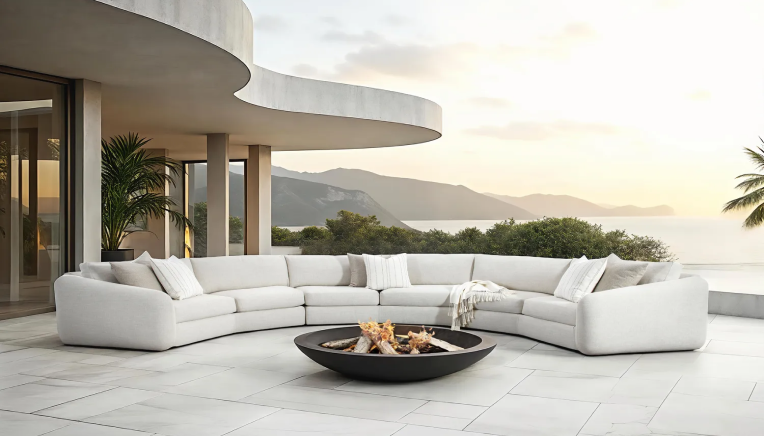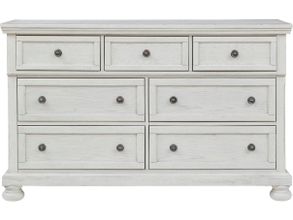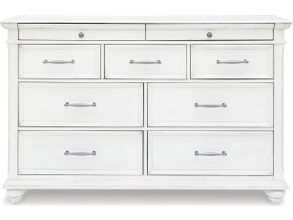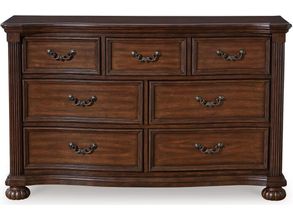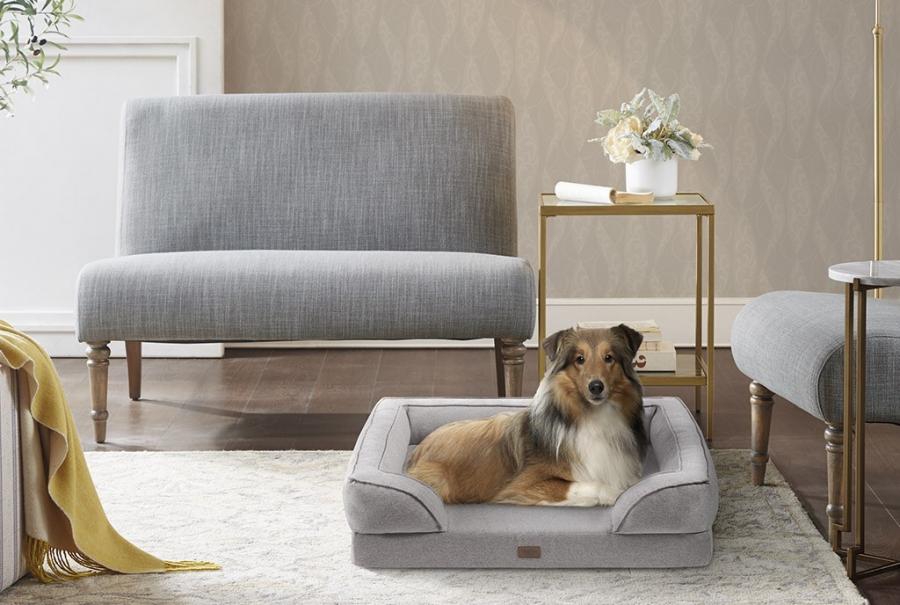
Are you moving into a new home and looking for the best ways to personalize your space, make your room feel cozy, and increase storage? Then why not consider having a dresser? No, they're not outdated, even though they date back to medieval times. Yes, they're as functional as they can get, and you can repurpose them if you wish.
Dressers are classic furniture or cabinet pieces comprising multiple stacked, horizontal, and parallel drawers. Many people confuse dressers for chests and use them interchangeably. However, while chests are typically tall and narrow, dressers are short and wide with more defined or dedicated storage options. Dressers also typically have spaces to place mirrors and dress up.
To purchase a dresser, you must consider numerous factors to avoid buying an ill-fitting one. Nevertheless, we're here with you every step of the way to help you choose the ones with the perfect dimensions for your space. In this guide, you'll learn all you need to know about dressers and sizes—and more.
Are you ready? Let's get started.
Types of Dressers
When purchasing a dresser, the types you need are one factor to consider as they may affect the dimensions. There are different types of dressers to choose from, including:
Horizontal Dressers
Horizontal dressers are the typical short and long dresser designs. Generally, they have their big and wide drawers beneath, with smaller ones on top of the larger ones. Horizontal dressers have more columns than rows, with ample surface space to place jewelry and other items. They also typically come with large mirrors.
Double Dressers
As the name implies, double drawers are about twice the size of the traditional horizontal ones. You may describe them as two-in-one dressers. These furniture pieces make the best options for couples of roommates as they can easily separate their stuff. This is because double drawers come with separate sides that are very distinct even from a distance.
Note that double dressers occupy a lot of space. So, they're suitable for large rooms but may not fit perfectly in tight spaces.
Combo Dressers
Combo (combination) dressers bring two highly distinct furniture designs together. They look like double dressers, but their separate sides are designed differently. One can describe them as one or two side or center cabinets attached to a standard dresser.
Combination drawers have the advantage of keeping you more organized than other designs. They may include wardrobe doors that allow you to place some of your clothes on hangers on one side. On the other side, they'll have a chest of drawers to fold other types of dresses.
This type of drawer is the best bet for people who don't want to store only clothes in their drawers. With the different compartment designs, they'll be able to store bags, purses, scarves, hats, belts, shoes, etc.
Vertical Dressers or Tallboy
Vertical dressers, also called tallboys, are taller and narrower than the traditional ones. This makes them the perfect choice for individuals with small bedrooms. Just as they save floor space, they may also provide inadequate storage space if you have many clothes to store. In such cases, it's advisable to buy a chest as a complementary furniture piece.
You may also classify drawers according to their styles and materials. For example, some drawers are made of wood, metal, and leather, while others are mirrored or made from particle boards. On the other hand, drawer styles are traditional, modern, glam, rustic, antique, contemporary, or shabby chic to fit your home's decor.
What's the Standard Dresser Dimensions
As we mentioned earlier, size or dimension are some of the most important factors when shopping for a drawer. In this section, we’ll discuss the depth, width, and height of standard dressers as well as longer dresser and dresser drawer dimensions:
Traditional Dresser Depth
Drawer depth is one of the factors to have in mind when buying a drawer because it determines how much space you have to store long items that must be placed vertically. Generally, dresses have up to four drawers that range from 18 to 24 inches deep. This is typically the same depth as the small ones you may find in children's rooms. The depth of horizontal double dressers with two columns is usually around 20 inches.
Standard Dresser Width
Coupled with the drawer depth, the width of your drawer gives the general idea of its storage capacity. If you also love to store your items horizontally, width is essential in making your purchase decision.
Standard drawers are about 30 to 70 inches wide, while double drawers are typically 60 inches wide. Small drawers have a width of about 30 to 40 inches.
Typical Dresser Height
While your drawer’s width and depth determine its storage capacity, the height of your drawer gives you an idea of how well it can fit into your room. This makes it an essential factor to consider when choosing these furniture pieces. In determining the correct drawer height for your bedroom, you may also want to consider the height of the items placed on top.
That said, standard drawers are about 30 to 35 inches high, reaching around your hips if you are of average height. Meanwhile, double dressers typically stop at 30 inches, while small dressers range from 28 to 30 inches tall.
Longer Dresser Dimensions
Some drawers have significantly longer widths than the standard drawer sizes. Called long drawers, these furniture pieces are about 63 inches wide and about 30 inches high, with depths around 19 inches. Since these drawers are much wider than their heights, they’re your perfect choice if you have a room with a low ceiling. Another advantage of longer drawers is that they have adequate storage spaces.
Dresser Drawer Dimensions
If you're a fan of dresser drawers, you already know they vary mainly in size, brand, design, material, etc. So, it's pretty challenging to have standard sizes for them. However, for most small dresser drawers, you'll find that they're about 12 inches wide, 14 inches deep, and 4 inches high. Medium-sized drawers are about 28 inches wide, 6 inches tall, and 16 inches deep. Meanwhile, large dresser drawers have width, height, and depth of around 30, 8, and 18 inches.
The standard 6-drawer dressers measure around 36 to 60 inches in width and are usually 26 to 44 inches high with a depth of approximately 26 to 44 inches.
How To Measure a Dresser
Now that you know the standard sizes for various types of dressers, how can you measure them to determine how suited they are for your space? The truth is that measuring dressers is not as easy as you think, as you risk making small mistakes that matter greatly. Luckily for you, we’ve taken our time to explain the best methods of measuring your drawers without errors. These techniques are easy too:
Find the Right Position
Before measuring your drawer, it's wise first to measure your space to determine the drawer dimensions that suit it best. Before measuring the area, you can choose the position you want your drawer to occupy. Generally, it's ideal to position your drawer along the wall facing your bed. However, you decide to make it as you may prefer a drawer that sits below your window frames.
Measure the Depth
After assessing your space, the next step is to determine how deep the drawer is. To do this, measure the space between the wall and the opposite furniture piece closest to it. If you’re using the traditional positioning, the nearest furniture piece should be the bed facing it. After measuring the bed, subtract 36 inches from the figure you arrived at. The final result is the correct depth for the drawer you should buy.
Note that subtracting 36 inches allows you to leave the drawer wide open conveniently.
Measure the Width
If you’ve successfully measured the depth of your ideal drawer, the next thing to determine is how wide it is. You can measure the wall area you want the drawer to cover. When calculating the width, be sure to consider the items that may be at the sides. For example, if the drawer is positioned beside your bedroom door, you may want to make sure there’s enough space to open the doors wide without hitting the dresser. Remember that convenience is paramount when measuring dresser dimensions.
Measure the Height
The last thing to measure is the height. As mentioned above, finding the correct height is vital because it determines how well your drawer will fit into the room. If you have a short ceiling, you wouldn’t want your drawer to scrape it during placement. Worse still, the drawer may be too big to stand upright. In any case, also ensure that you consider the height of the items like clocks, books, etc., you wish to place in the drawer for similar reasons.
Now, let’s get right to how to measure the height of your preferred space. Simply measure the distance between the floor and the window sill or ceiling. This will give you an idea of the ideal drawer height to choose that wouldn’t be too tall for your room.
Easy Peasy!
How To Choose the Right Dresser
These are the factors to consider when choosing the perfect drawer for your space:
Low Ceilings and Small Rooms
If your ceiling is low and your room is small, we advise that you choose combination drawers as they provide better storage solutions while taking up a small portion of the room. However, combo drawers will not serve you to your satisfaction if you need lots of storage space as they have fewer drawers than conventional ones. If your area requires a minimalist feel, you can make do with upright drawers with narrow frames and up to four drawers on a column.
High Ceilings and Large Rooms
Rooms with high ceilings have enough overhead space, so you can make do with larger dressers for large rooms or tallboys if your room is narrow. The advantage of large rooms and high ceilings is that you can get drawers with more storage options.
Children's Dressers
Your kids' drawers may require more consideration than yours. For example, you’ll have to leave room to switch from cribs to beds as they grow older. You may also have to consider styles, color schemes, and other changes over time. The best approach to children’s rooms is to get a drawer that can remain relevant in the room despite the various changes that may occur in the long run. This is especially important when choosing the size of the drawer.
Considering these factors, the ideal drawer for your baby's room should have a wide top and be waist-tall. This guarantees its multi-functionality as it can also serve as a dressing table. However, ensure that it also leaves enough room for your kids to play as they transition from toddlers to young children.
Storage Needs
What are your storage needs? Do you have more variety of clothes and accessories to store? What are their sizes?
Small drawers will do, especially in a small space, if the items you wish to keep are small, like underwear, socks, ties, jewelry, etc. However, for bulkier items, consider a double dresser or combination dresser for taller items.
Final Thoughts
Deciding on the correct drawer dimensions for your space can be a hassle, especially when you don't have much time to choose. Fortunately, with this guide, you now understand all you need to know about measuring drawers. This means that you can confidently shop for one in no time like a pro. Kudos to you!
Frequently Asked Questions
What is a good depth for dresser drawers?
It depends on the size. Your dresser drawer depth should be around 14 inches if you have a small dresser drawer. For medium-sized dresser drawers, you should have a depth of about 16 inches, while large dresser drawers have their ideal height of around 18 inches.
How do I choose a dresser for my room?
It will help if you consider numerous factors. First, choose the dresser placement in your room and measure the dimensions. Start by measuring the width and removing 39 inches from it to give enough room for opening the doors. Next, measure the depth and height. You may also want to consider the size of your ceiling and storage needs when choosing the right dresser for your room.
Which material should my dresser be made of?
Various materials. Regarding the material type, there are different dresser options to pick from. The common ones include wood, metal, and leather. You can also find dressers made of mirrors and particle boards. When choosing dressers, you should consider your style, needs, preference, budget, and durability. There’s no one-size-fits-all approach to dresser materials.

